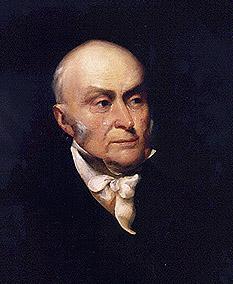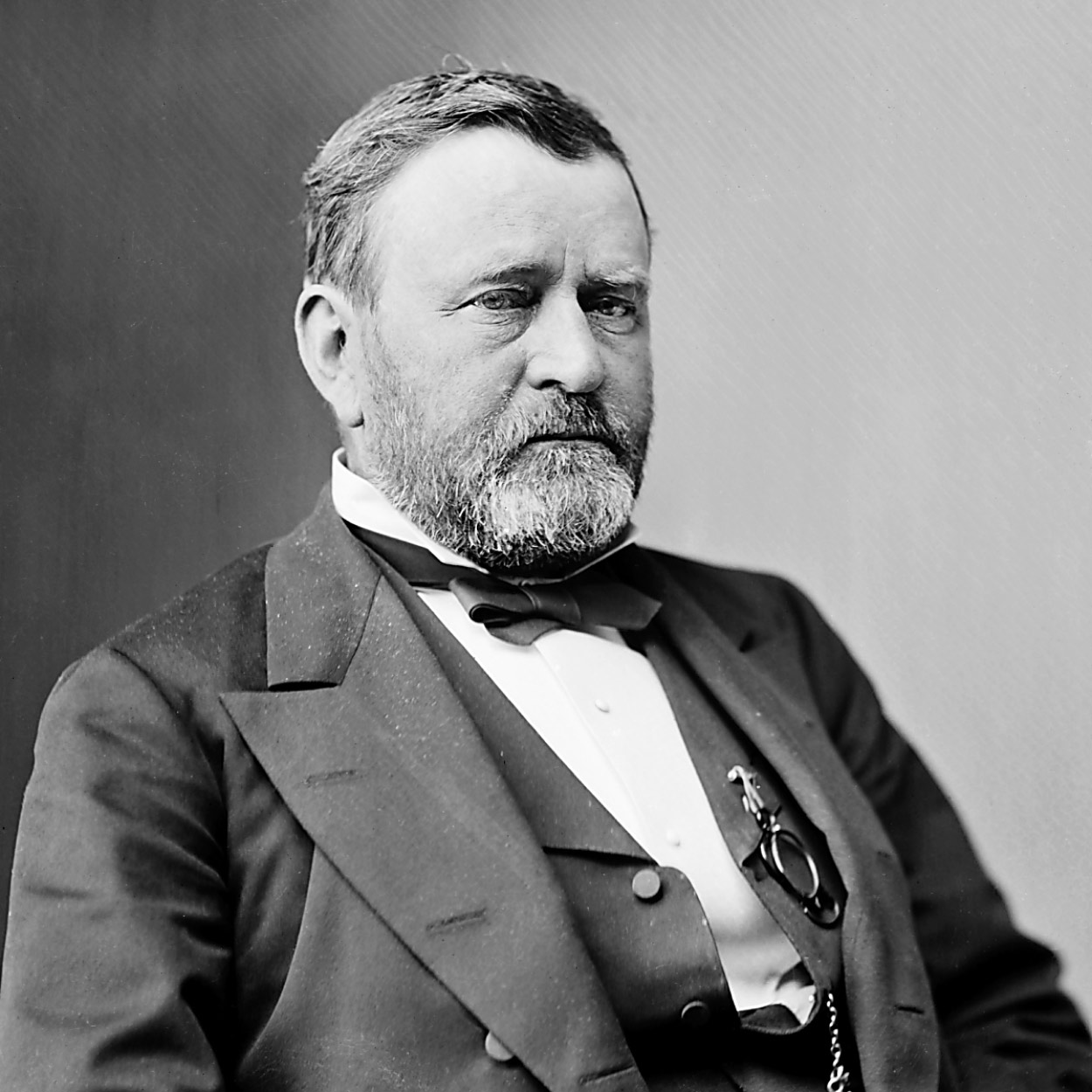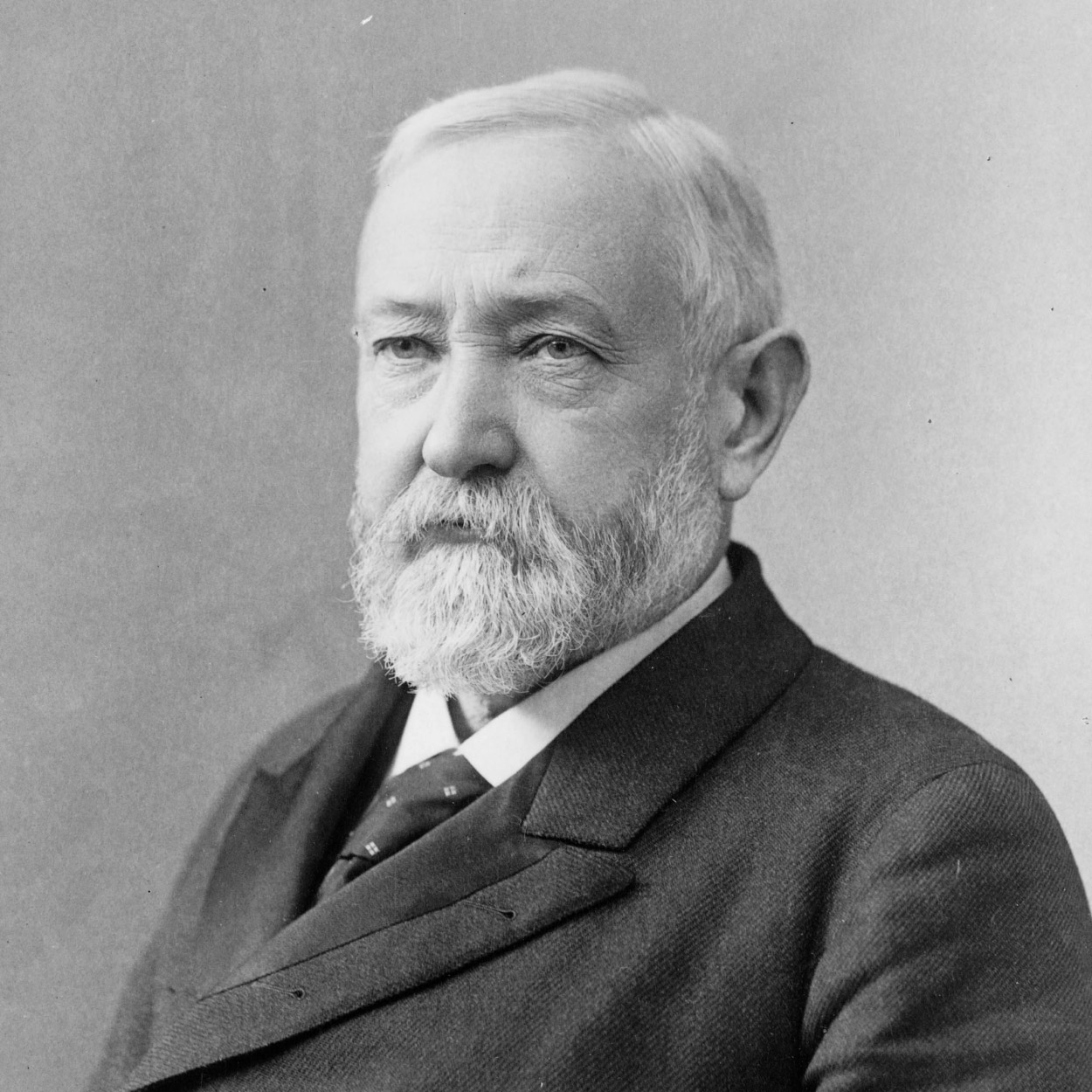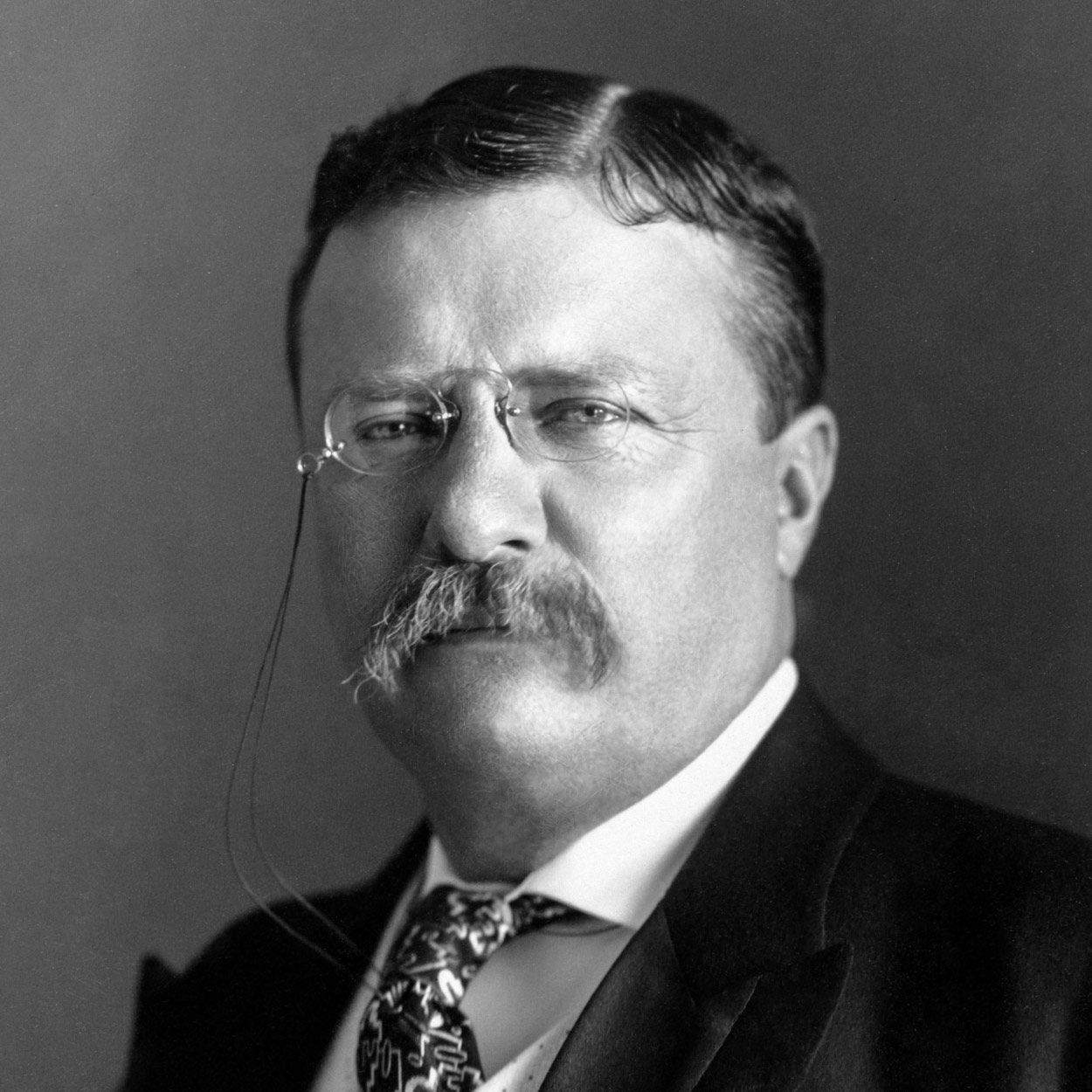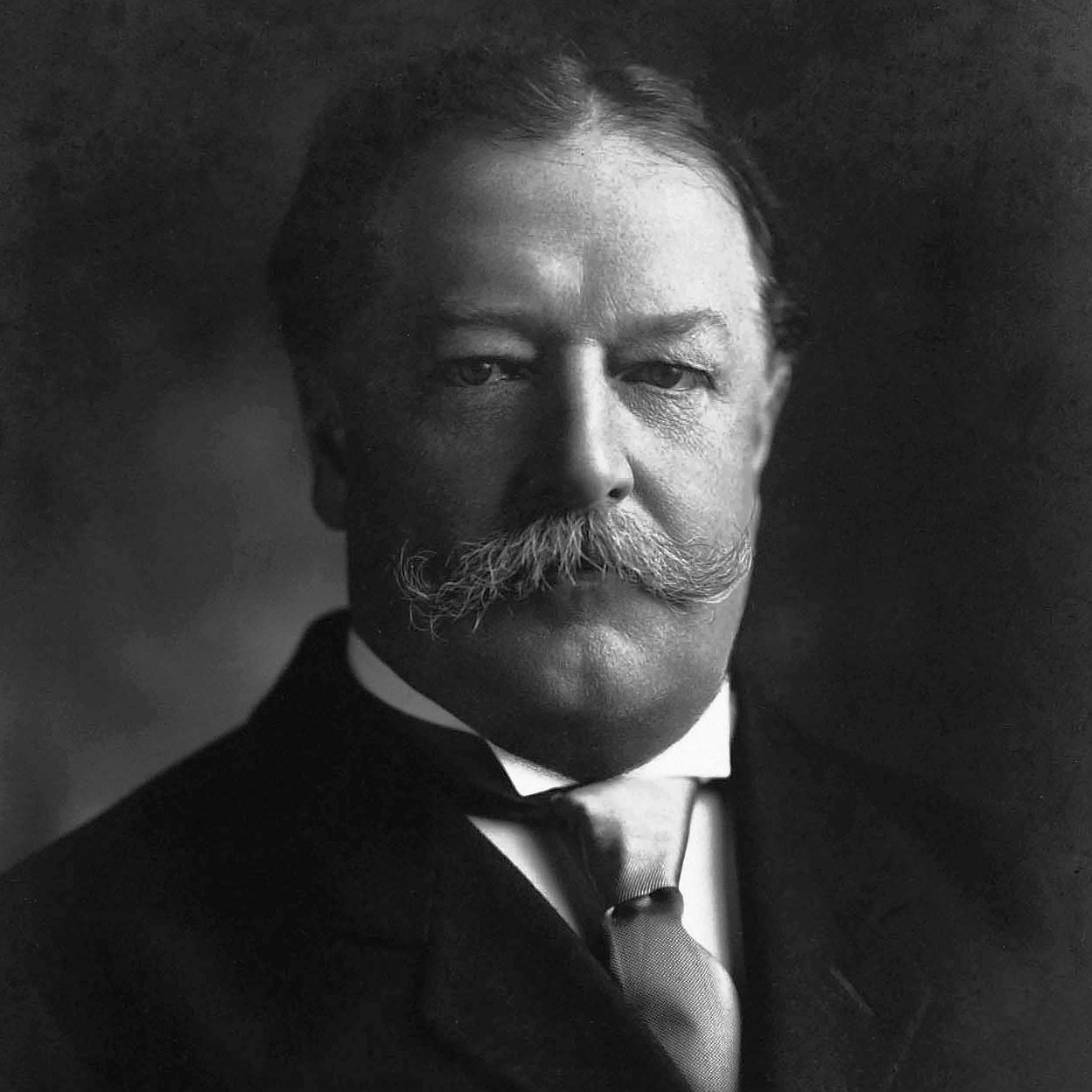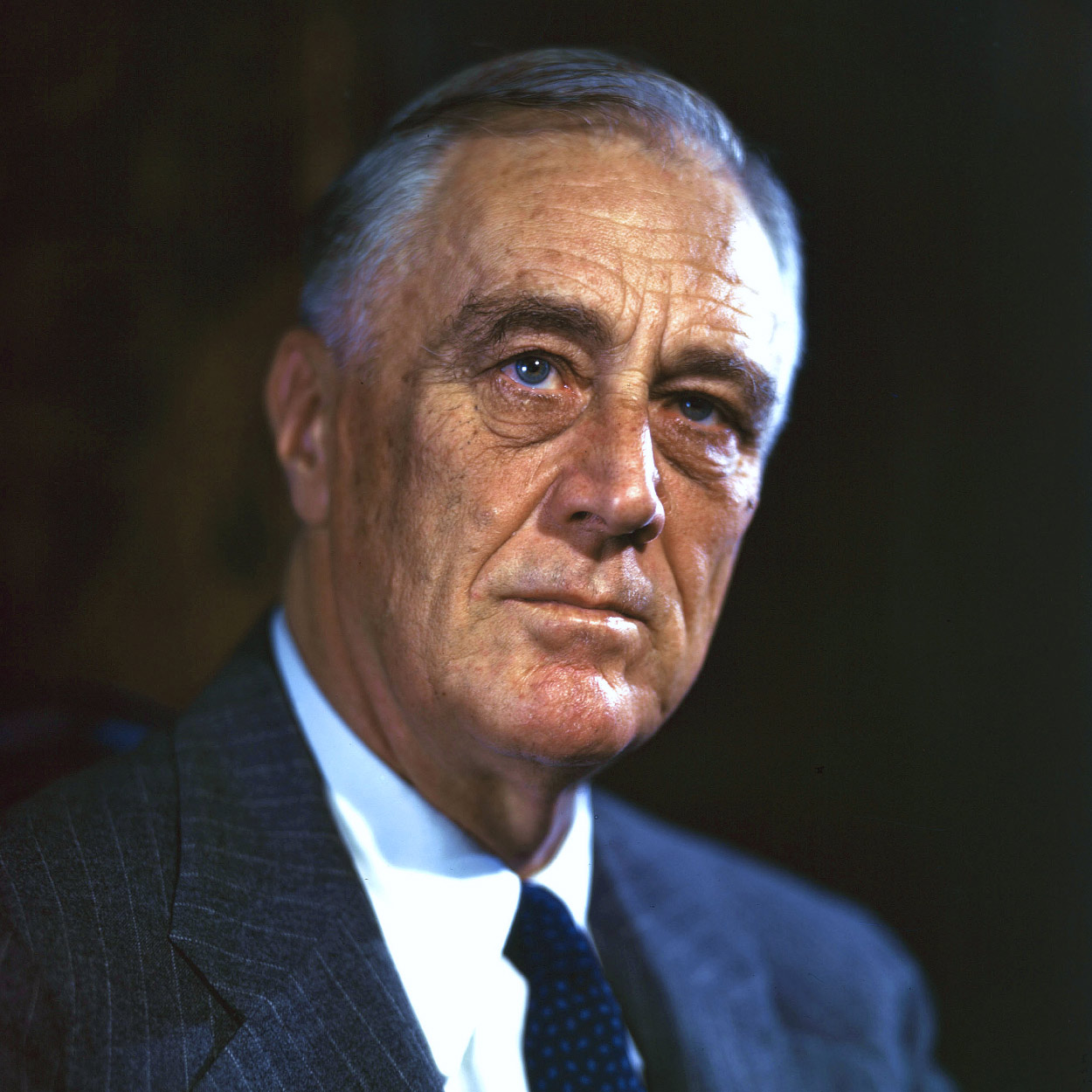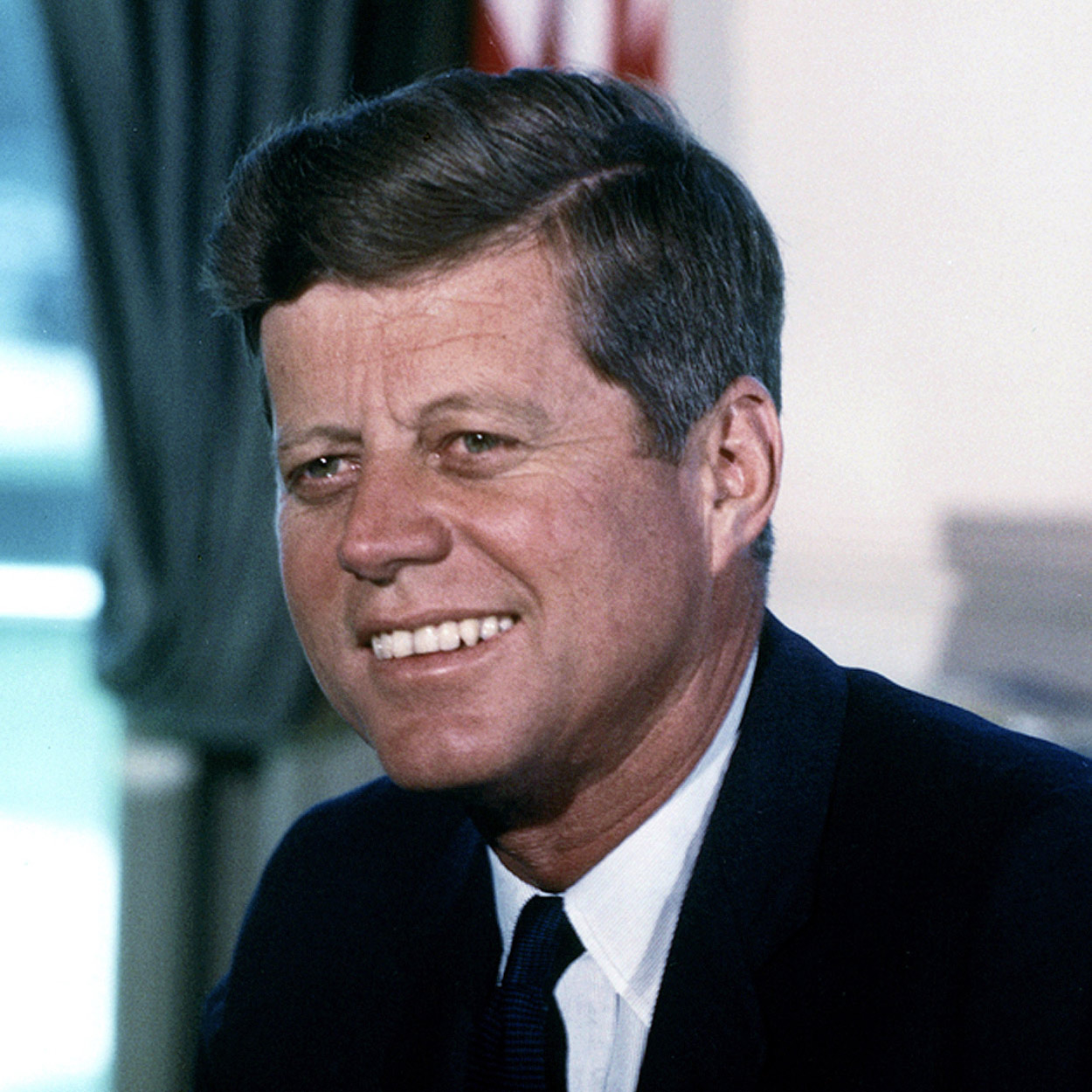John F. Kennedy, of course, was born in Brookline. But did you know that as many as 23 United States presidents—from George Washington to Barack Obama—have been in Brookline before, during, or after their presidencies?
Theodore Roosevelt was married in Brookline (at the First Parish Church). John Adams made many visits to the town, where his mother, Susanna Boylston Adams, was born and raised.
Other presidents visited prominent residents or toured Brookline sites while on trips to Boston. A few, including Abraham Lincoln, simply passed through the town in carriages or on the railroad while traveling to or from Boston or other New England communities.
Here is the list, with details of each president's visit.
George Washington was in command of the Continental forces besieging Boston from July 1775 until the British evacuation on March 17, 1776. The main route between Washington's headquarters in Cambridge and key fortifications on Dorchester Heights and elsewhere passed through Brookline.
Various secondary sources report the general traversing this route at various times, and it seems likely that he did on several occasions. There are also unconfirmed stories of his having inspected the Brookline Fort at Sewall's Point during the siege.
Washington certainly passed through Brookline during a visit to Boston in October 1789, six months after his inauguration as president. William Sumner, who was a boy of 9 at the time, described the visit 71 years later in the New England Genealogical Register. After inspecting the militia on Cambridge Common, reported Sumner, the president ("on a noble white charger") and a large procession set out for Boston.
Leaving Cambridge, the procession crossed Charles river over the old Cambridge bridge into Brookline. Thence passing by the Punchbowl tavern through Roxbury, they met at the dividing line between Boston and that town the officers and leading citizens of Boston, who came out to tender Washington the hospitalities of the metropolis.
John Adams' mother Susanna Boylston Adams, the daughter of Peter Boylston, was born and raised in Brookline. Adams made numerous visits to Brookline in the course of his long life.
The Rev. John Pierce was ordained as minister of Brookline's First Parish in March 1797, the same month Adams was inaugurated as president. Many years later, in 1849, Pierce shared this account of one of Adams' visits:
President Adams often mentioned with a lively interest this place of his mother's nativity. While President of the United States, he called on the Hon. Jonathan Mason, where General Theodore Lyman's house now stands, and remarked, as a striking illustration of the changes in the manners and customs of the country, that the last time he had travelled over the road before, he carried his mother, horse-back, on a pillion behind him.1
Perhaps the last visit of Adams to Brookline was described by John William Denehy in his 1906 history of the town:
In 1821, President Adams, then 86 years of age, having expressed a desire to again visit the house in which his mother was born, a grand dinner party, given in his honor by Mr. David Hyslop at which Governor Brooks, General Sumner, and other distinguished guests were present, was held at the old Boylston House, which had been purchased from the heirs of Dr. Za[b]diel Boylston, by Mr. Hyslop's father.2
JAMES MONROE
James Monroe came to Boston as president in 1817 and rode out to Brookline and the country seat of Commodore William Bainbridge, former captain of the U.S.S. Constitution, where the president, according to a contemporary account, “breakfasted with that officer, his family, and some distinguished citizens, who composed the company.”3 Leaving Bainbridge's home, Monroe visited the celebrated Brookline gardens of Thomas Handasyd Perkins on his way to Watertown and Waltham.
JOHN QUINCY ADAMS
Evidence of John Quincy Adams in Brookline, birthplace of his grandmother Susanna, is sparse, but Paul C. Nagel in his biography of Adams (John Quincy Adams: A Public Life, A Private Life, Harvard University Press, 1999) mentions Brookline as one of several towns where the former president made lyceum speeches in 1842.
Adams was certainly aware of his Brookline heritage. In his memoirs, he mentions speaking with the Rev. John Pierce of the First Parish Church at a dinner in Washington in September 1826, less than two months after his father's death:
Mr. Pierce spoke to me of the remains of my father's maternal family at Brookline—Boylstons and Whites—and of the ancient family estate in that town, which has gone into other hands.4
ANDREW JACKSON
Andrew Jackson came to Boston in June 1833 as part of a tour through the northeastern states. He was honored at Harvard, and visited Bunker Hill, Lynn, Salem, and Concord, New Hampshire, among other places. Jackson became ill and had to cancel plans to visit Portsmouth, New Hampshire and Portland, Maine.
On his way back to Washington from Concord, the farthest point of his journey, Jackson and his party passed through Brookline to reach Roxbury where they spent their final night in Massachusetts.
Not everyone was happy to see the president in Boston. He had defeated John Quincy Adams for the presidency in 1828, and many of Jackson's policies were strongly opposed in the region. Some could only hold their noses as they watched the reception the president received. As one Massachusetts paper put it: "Let us not cease to remember that there is a broad line of distinction between the honors due to the office, and the respect due to the man."5
MARTIN VAN BUREN
As Andrew Jackson's vice president, Martin Van Buren accompanied Jackson on his Boston visit and passed through Brookline with the president on their way to Roxbury and then to Washington.
JAMES K. POLK
After visiting Baltimore, Philadelphia, New York, New Haven, Hartford, and Springfield, President James K. Polk on June 29, 1847 boarded a special train prepared in the latter city to take him to Boston.
Arriving in Brookline amid heavy rain "at the designated point a few rods west of the branch road leading from the mill-dam road," Polk boarded a barouche (a type of horse-drawn carriage) for the ride from Brookline into Boston. Polk's visit also took him to New Hampshire and Maine, where he celebrated the Fourth of July, before returning to Washington.
JAMES BUCHANAN
James Buchanan, as Polk's Secretary of War, accompanied him on his 1847 tour through the northeastern states, passing through Brookline with the president on the way to Boston in late June. He was elected president nine years later.
ABRAHAM LINCOLN
Of all the presidents who visited or traveled through Brookline, Abraham Lincoln likely saw less of the town than any. Like Jackson, Van Buren, Polk, and Buchanan before him and Andrew Johnson after, Lincoln only passed through the town in transit between other cities and towns in New England.
In Lincoln's case, he was probably only in Brookline for a few minutes, cutting through the northernmost part of the town on a train en route from Boston to points west. (The tracks of the Boston & Worcester Railroad followed the same route through Boston, Brookline, and Brighton that the Mass Pike follows today. Most of the Brookline section of the route was later transferred to Boston when Brighton, an independent town until 1874, was annexed to the city.)
Lincoln passed through Brookline this way twice: as an Illinois congressman in September 1848 while campaigning for Zachary Taylor, the Whig candidate for president; and in March 1860, after visiting his son Robert at school in Exeter, New Hampshire.
Lincoln's 1848 campaign visit included speeches in Worcester, Boston, New Bedford, Lowell, Dorchester, Chelsea, Dedham, Cambridge, and Taunton. On September 23, he boarded a train for home by way of Worcester, Springfield, and Albany, passing through Brookline near the beginning of the route.
In March 1860, Lincoln came to New England to visit his oldest son Robert, then a student at Phillips Exeter Academy. He made speeches in Rhode Island and New Hampshire, and then followed the same train route west, through Brookline, Worcester, and Springfield to Hartford followed by more speeches in that city and others in Connecticut. Two months later he won the Republican nomination for president at the party convention in Chicago.
ANDREW JOHNSON
Andrew Johnson came to Massachusetts in June 1867 for the dedication of a new Masonic Temple in Boston. Arriving via Springfield and Worcester on the railroad, the president and his party disembarked in Brookline to a cheering crowd.
At the Longwood or Cottage farm [reported the New York Herald] there was a crowd of from twenty to thirty-five thousand citizens and military organizations numbering two or three thousand guns, all of whom indulged in the most cheerful and heartfelt demonstrations of welcome. A national salute announced the coming of the train, and as it approached the rural station the cheers which the concourse of people sent up completely deadened the screaming whistle and dinging of the bell of the locomotive.6
Johnson traveled "through the finest portion of Longwood, and past the elegant and picturesque residences that make Longwood and Brookline so famous” before making his way to Boston via the Town of Roxbury.
ULYSSES S. GRANT
Ulysses S. Grant visited Brookline at least twice, once during his presidency and once after leaving office.
As president, Grant came to Boston in late June 1872, two weeks after accepting the Republican nomination for a second term, to attend the World's Peace Jubilee and International Music Festival. He met with Robert C. Winthrop and other trustees of the Peabody Educational Fund at the Revere House in Boston and attended a dinner at Winthrop's summer home on Warren Street in Brookline. (Grant and Winthrop were among the original trustees of the Fund, established by George Peabody in 1867 to support Southern education.)
In October 1880, Grant was in Boston again for several days. On the 15th, accompanied by John W. Candler of Brookline, Republican candidate for Congress, the then ex-president took a carriage ride through the suburbs, stopping for lunch at Candler's home on High Street Hill.
There may have been other visits as well. In an 1896 history of the town, Charles Knowles Bolton, writing about Brookline resident and railroad president Ginery Twichell during the Civil War, noted a visit on an unspecified date.
Years afterward [wrote Bolton], Mr. Twichell entertained in Brookline the great military leader of the war, General U.S. Grant. The general walked into the fields east of Kent street to see some wild animals kept by Mr. Twichell's son.7
Another Ulysses S. Grant—the president's grandson Ulysses S. Grant III—lived on Brington Road in Brookline for a short time in the early 1900s while on military duty in Boston. Grant and his wife Edith, the daughter of Teddy Roosevelt's Secretary of State Elihu Root, moved to Brookline after a Washington wedding attended by President Roosevelt and many U.S. and foreign dignitaries.
CHESTER A. ARTHUR
Chester A. Arthur, who succeeded the assassinated James Garfield as president in 1881, came to Boston in October 1882. A large reception was held at Faneuil Hall on October 11th, and in the afternoon the presidential party climbed into barouches for an excursion to Brookline.
Riding out Beacon Street as far as the Chestnut Hill Reservoir, Arthur and his entourage were entertained at the Brookline estate of Charles Sprague Sargent before returning to Boston for the evening.
BENJAMIN HARRISON
Benjamin Harrison, elected in 1888 between the two terms of Grover Cleveland, took an excursion to Brookline by carriage in August 1889 during a visit to Boston, part of a week long New England sojourn.
Late in the afternoon of August 7th, the President and a large party, riding in carriages and accompanied by mounted officers, set out on a ride through Brighton and Brookline. They climbed to the top of Corey Hill and proceeded from there to a reception at the home of Congressman John Candler on High Street Hill before returning to Boston.
See my earlier post Presidents in Brookline: Benjamin Harrison for more on Harrison's Brookline visit.
THEODORE ROOSEVELT
While a student at Harvard, beginning in 1876, Theodore Roosevelt had an active social life. "The young collegian," wrote William Draper Lewis in a 1919 biography, "became a familiar figure in Cambridge and Boston—especially in Brookline—driving about in a sort of sporting phaeton, then the height of the New York style in equipages."8
But it was in Chestnut Hill in Newton in 1878 that Roosevelt was introduced to his future wife, Alice Hathaway Lee. She was the cousin and next-door neighbor of Roosevelt's Harvard classmate Richard Saltonstall. At 17, she was two years younger than Roosevelt.
After what was described as a tumultuous courtship, they were married on October 27, 1880—Roosevelt's 22nd birthday—in the First Parish Church in Brookline. Alice Roosevelt died a little over three years later, on February 14, 1884 from Bright's Disease and complications from childbirth. Roosevelt was devastated and was said to rarely speak about Alice thereafter.
A later visit to Brookline came in 1912, when the then ex-president stayed at the Brandegee Estate in South Brookline. An Associated Press story reported how Roosevelt sped from the Back Bay Station to Brookline, pursued by the paparazzi of his day.
A flotilla of taxicabs, filled with reporters and camera men, tagged the speeding motorcar through the outlying section to the home of Edward M. Brandegee, in Brookline. The colonel reached the Brandegee home before even the first members of the camera squad could take a snapshot.9
Roosevelt stayed at the Brandegee home for four days before returning to New York.
WILLIAM HOWARD TAFT
William Howard Taft, who succeeded Theodore Roosevelt as president, spent the summers from 1909 to 1912 in his "summer capital" along the shore in Beverly, Massachusetts. In September of the first year of his presidency, Taft came to Brookline for a field day held in his honor by the Yale Club of Boston.
The president (Yale, Class of 1878) played a round of golf at The Country Club, followed by a luncheon in his honor at the nearby home of Herman L. Whipple. As the New York Times described it:
The President motored from the club grounds to Mr. Whipple's home, where the latter had invited a company of nearly 300 Yale men to meet President Taft at luncheon. Following the luncheon came a reception under one of the towering elms on the Whipple lawn. After the entire company had passed by in a single column and had shaken hands with the President, some one stopped and asked for an autograph on his menu card. The idea was no sooner suggested than a hundred or more of the college men were swarming about the President in quest of similar souvenirs.10
Taft later watched the first inning of a baseball game between former Yale players before leaving for the return trip to Beverly. (Asked to umpire the game, Taft declined, saying, according to the paper "I value my life too much for such a job as that.")
Four years later, Taft was at The Country Club again, in the gallery for the first day of play at the 1913 U.S. Open, the year Brookline's Francis Ouimet won his historic victory over British stars Harry Vardon and Ted Ray. In October 1915, the then ex-president Taft spoke in favor of the proposed League of Nations before 1,300 people in the Harvard Congregational Church on Harvard Street.
CALVIN COOLIDGE
In 1908, while representing Northampton in the Massachusetts House of Representatives, Calvin Coolidge visited his stepmother Carrie Coolidge at the Corey Hill Hospital in Brookline where she was being treated for an unidentified illness. Coolidge wrote from the hospital to his father in Vermont about his stepmother's condition.
It seems likely Coolidge visited or passed through Brookline at other times, perhaps during his terms as lieutenant governor and governor of the Commonwealth, but I have not found any record of subsequent visits.
FRANKLIN DELANO ROOSEVELT
Franklin Roosevelt, like his cousin and presidential predecessor Theodore, took part in a wedding in a Brookline church. In FDR's case, it was not his own wedding but that of his oldest son James.
James Roosevelt and Betsey Cushing were married at St. Paul's Episcopal Church on June 4, 1930. Franklin Roosevelt was governor of New York at the time. The bride's father was renowned neurosurgeon Harvey Cushing of Brookline.
More than 500 guests—"leaders of the medical, political, diplomatic and social worlds," according to the New York Times—were in attendance. Spectators, noted the Boston Globe, thronged the neighborhood around the church.
Several thousand intensely curious persons followed the incidents of yesterday's marriage and the reception following, with avid interest [reported the Globe]. The crowd of onlookers around the church grounds, in the triangle at Aspinwall av and St Paul st, was so great that it took a large force of policemen and motorcycle men to keep the surrounding streets free of congestion so that the machines conveying members of the bridal party and the guests might reach the church door conveniently.
The church lawns were overrun with people on the Aspinwall av and St Paul sides. Verandas and steps of neighboring houses were used as points of vantage from which to watch the arrival of guests and later that of the bridal attendants and the bride herself.11
The ceremony was followed by a reception on the grounds of the Cushing home on Walnut Street where about a dozen large tents were erected on all sides of the mansion, including one with a dancing floor over the tennis courts.
James and Betsey Roosevelt were divorced in 1940.
JOHN F. KENNEDY
John F. Kennedy, of course, is the only U.S. President born in Brookline. Kennedy was born May 29, 1917 in the family home on Beals Street, now a National Historic Site administered by the National Park Service and open to the public.
Kennedy lived in the Beals Street home for six years before moving with his family to a larger home on Naples Road nearby. Kennedy attended both the Edward Devotion School and the Dexter School in Brookline before the family moved to New York in 1927. He was baptized and served as an altar boy at St. Aidan's Church on Pleasant Street.
JIMMY CARTER
Jimmy Carter came to Brookline while running for the Democratic nomination for president in 1975. Details of Carter's visit still need to be added.
George H.W. Bush was a former president and George W. Bush was seeking the Republican presidential nomination when they attended the Ryder Cup golf tournament together at The Country Club in Brookline in 1999.
The younger Bush's attendance at the match between U.S. and European golfers was not without controversy. Bush, then governor of Texas and leading in Republican polls, skipped the California Republican Convention to attend the tournament. That drew criticism from some of his rivals for the party's nod, but did nothing to derail Bush's drive toward the eventual nomination and the White House.
BILL CLINTON
Bill Clinton made two appearances at campaign events in Brookline during his successful 1992 quest for the Democratic nomination for president. Clinton met with members of the Brookline Democratic Committee in January. In April, he was back for a fund raiser at the home of Robert Farmer, his national campaign treasurer.
Clinton's January visit with the Brookline Democrats was paired with an appearance before the South Shore Chamber of Commerce in Dedham, a pairing the Boston Globe saw as indicative of his ability to reach out to different segments of the party.
Presidential hopeful Bill Clinton straddled the yin and yang of Massachusetts Democratic politics last week, [said the Globe] pitching his middle-class pragmatism in separate events to Dukakis Democrats in Brookline and Silber Democrats in Dedham, and leaving both crowds smiling.12
BARACK OBAMA
It was suggested when I first wrote this piece that Barack Obama may well have been in Brookline while a student at Harvard Law School, perhaps to eat in one of Brookline's restaurants, shop at its stores, or catch a movie at the Coolidge Corner Theatre. Evidence of such an early visit may yet turn up. But Obama definitely came to Brookline on May 18, 2011, making one of his two fundraising stops that day at the home of Jack & Eileen Connors in South Brookline.
NOTES
1 "An address at the opening of the Town Hall, in Brookline: on Tuesday, 14 October, 1845." (A pillion is "a pad or cushion put on behind a man's saddle chiefly for a woman to ride on." - Merriam Webster Online.
2 A history of Brookline, Massachusetts, from the first settlement of Muddy river until the present time: 1630-1906
3 A Narrative Tour of Observation: Made During the Summer of 1817.
4 Memoirs of John Quincy Adams, comprising portions of his diary from 1795 to 1848, Volume 7
5 "The President's visit to Boston." New-Bedford Mercury, June 21, 1833, p. 2.
6 "The Presidential tour." New York Herald, June 23, 1867, p. 3.
7 Brookline: the history of a favored town
8 The life of Theodore Roosevelt
9 "Roosevelt is welcomed by Boston crowd: Colonel bows to admirers and speeds to Brookline home." Pittsburgh Gazette Times (Associated Press), February 25, 1912, p. 6.
10 "President has fun with old Yale Men." New York Times, September 8, 1909, p. 10.
11 "Miss Betsey Cushing married as throng surrounds church." Boston Globe, June 5, 1930, p. 12
12 "Clinton finds favor playing to 2 audiences." Boston Globe, January 21, 1992, p. 12
Presidential images from whitehouse.gov



